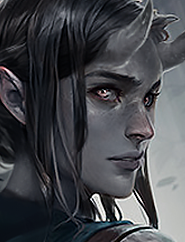civilization was a mistake
return to hibernation
We found trabecular tunneling andosteitis fibrosa, subperiosteal resorption, ‘rotten fence post’ signs, brown tumours, subperiosteal new bone, chondrocalcinosis, rachiticosteoplaques and empty gaps between them, craniotabes, and beading of ribs mostly in the adolescent population of these hominins. Since many of the above lesions are pathognomonic, these extinct hominins suffered annually from renal rickets, secondary hyperparathyroidism, and renal osteodystrophy associated with Chronic Kidney Disease - Mineral and Bone Disorder (CKD-MBD).
No thanks, I'll pass.
You're telling me I could just fatten up during the summer and then sleep it all off during the winter while also missing the shittiest season? Evolution, what the fuck man?! :negative:
Abstract: Both animal hibernation and human renal osteodystrophy arecharacterized by high levels of serum parathyroid hormone. To testthe hypothesis of hibernation in an extinct human species, weexamined the hominin skeletal collection from Sima de los Huesos,Cave Mayor, Atapuerca, Spain, for evidence of hyperparathyroidismafter a thorough review of the literature. We studied the morphologyof the fossilized bones by using macrophotography, microscopy,histology and CT scanning. We found trabecular tunneling andosteitis fibrosa, subperiosteal resorption, ‘rotten fence post’ signs,brown tumours, subperiosteal new bone, chondrocalcinosis, rachiticosteoplaques and empty gaps between them, craniotabes, andbeading of ribs mostly in the adolescent population of thesehominins. Since many of the above lesions are pathognomonic, theseextinct hominins suffered annually from renal rickets, secondaryhyperparathyroidism, and renal osteodystrophy associated withChronic Kidney Disease - Mineral and Bone Disorder (CKD-MBD)
We suggest these diseases were caused by poorly toleratedhibernation in dark cavernous hibernacula. This is particularlyevidenced by the rachitic osteoplaques and the gaps between themin some of the adolescent individuals along with the evidence ofhealing mainly in the adults. The sublayers in the rachiticosteoplaques indicate bouts of arousal from hibernation. The strongprojection of the external lip of the femoral trochlea, the rachiticosteoplaques with the empty gaps between them, the ‘‘rotten fencepost" sign, and the evidence of annual healing also point to thepresence of annually intermittent puberty in this extinct humanspecies. The hypothesis of hibernation is consistent with the geneticevidence and the fact that the SH hominins lived during an extremeglaciation. Alternative hypotheses are examined. The present workwill provide a new insight into the physiological mechanism of earlyhuman metabolism which could help in determining the lifehistories and physiologies of extinct human species.
Might be a way to cut resource demand by a third from one moment to another (that is if it wouldn't be the most consuming people / nations be the problem in consumption).
It would also mean the global south is awake while we're asleep and vice versa. That should fix a few things.
We still see indicators of the hibernation trait in the modern homo-sapien when we observe the average American liberal whenever their political candidate wins
There was an article in the Lancet or some other British scientific journal from the beginning of the previous century claiming that Russian peasants hibernated during winter.





